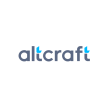
Cookies (third party cookies) have been the lifeblood of online marketing for over a decade. With the help of them, marketers tracked the actions of users on the Internet and made advertising. The company received information about the behavior, preferences and interests of the audience.
But with the advent of GDPR and CCPA, which will close access to third-level data in 2023, marketers are beginning to think more seriously about advertising in a privacy-first world.
Marketers are starting to adapt to a world without cookies and are realizing that CDPs (Customer Data Platforms) are becoming a powerful marketing tool. CDP manages, collects and stores customer data in compliance with data protection regulations.
What would a world without cookies look like?
Imagine what would change on the Internet without cookies.
Google Topics
Topics are the third part of Google's decision to block access to third-party cookies. The tool groups users by unique identifiers: the IP address accessed by the client's web browser. The API stores information about three to five topics with which a person constantly interacts on the Internet. For example, sports, news and pets.
Websites are then able to access these topics to produce advertisements that will possibly attract the user when they visit the site. For example, an ad for pet products appears next to sporting goods.
But that's part of the problem when it comes to new ideas for ad targeting.
In the new reality of targeting, marketers are discussing and testing other methods:
- Contextual targeting
- Universal Identifiers
- Probabilistic
- Cohort-based targeting
First-party data precedence
Because of the rejection of third-party cookies, companies and marketers must make full use of first-party data. This is information that the company collects from customers and becomes the sole "owner". Such data is valuable to marketers because it provides accurate information. Another advantage is the transparency of the provenance.
Data from customers is important in a world where privacy is a priority. When a business has complete information about the customer's journey, it regulates the use of data without any problems: it selects those to which users themselves have opened access.
With first-party data, marketers have access to a wealth of information such as consumer preferences, location, and other demographic data that can all be used to build a complete customer profile. Further, advertising is set up for the user and the company's marketing works. First-party data strategies are able to maintain positive and compliant customer experiences, protect personal information and enhance advertising opportunities for marketers.
Customer Data Platform Benefit
The creators of Data Management Platforms (DMPs) and Customer Data Platforms (CDPs) were already gearing up for a world without cookies.
According to the latest research by Zeotap, 1% of marketers are ready to abandon DMP and switch to CDP. Why? It's all about the first level data that CDP usually uses (as we now know, this is the key to success in a future without cookies). DMP works more often with third-level data.
6 ways CDP will solve the problem of a world without cookies
1. Data collection management
The gigabytes of data that companies collect across dozens of touchpoints (customer service, websites, point of sale) can reveal the needs and desires of consumers. However, collecting, managing and analyzing data from multiple sources can sometimes be a minefield.
This is where CDP comes into play. The CDP is able to collect information, manage first-level client data from unrelated sources and make it usable.The platform unites information into single customer profiles, sometimes referred to as "golden records".
CDP receives this data in an unlimited number of formats: files, integration with other platforms and even web application pixels. A good CDP will pull information from just about anywhere.
2. Resolve identities into a single customer view
A 360-degree customer view, often referred to as a single customer view, is a comprehensive aggregation of available user data.
This information may include contacts, user purchases, details of transactions that customers have made at business touch points (such as customer service or stores) along the customer journey. Customer data comes from different sources.This is a large amount of information that must be aggregated, cleaned and combined. It is then stored in a secure location that is accessible only to interested employees. But with cookies gone, identifying customers and attributing the right data fragments to them gets harder.
Here, Identity Resolution technologies play a decisive role in platforms. They compare, standardize and verify information. The attributes of the same individual user are linked together under a unique ID by applying a classification scheme to the data labels of your multiple sources. It enables the creation of a single view of the client that the business needs.Therefore, customer data platforms are the best software for creating a secure and complete client profile.
3. Manage Consent
CDP tracks and manages the whole consent journey. This is vital to ensure that the customer's data is only handled in the way that the customer has authorized.
For example, a customer consents to the use of personal data for the company's marketing purposes via a mobile app, but might later retract that consent when engaging via email.
In unifying that customer's data from separate channels and data sources, a CDP integrates customer consent records to work with their data. The process is called consent orchestration, which makes it easier for the user to choose.
4. Enable activation in walled gardens
In the cookieless future, marketers will still want to use the addressability options that will remain in the biggest platforms. These 'walled gardens' like TikTok, Facebook and Google Ads, which will take on a new role as the open web adapts to life without cookies.
But there is one thing. Walled gardens mean multiple data sets with multiple activation requirements: a very manual process which can result in delays. Paid media managers know exactly what we're talking about.
If a business needs a data-driven strategy that launches in a couple of clicks, a CDP is the way to go. With a customer data platform, a company gains access to customer segments that are activated across multiple channels with a single click.
There will be no dependence on data collection teams, and the information received will work more efficiently. CDP will help you identify segments of possible customers through behavioral data from various touchpoints.
Therefore, if in the past you created audiences and thought: "I wish I could combine data from our CRM and website", now you have found the answer.
5. Activation across the open web through Universal IDs
In the future, CDP will become the main tool for dealing with addressability on the open web through Universal IDs.
Universal IDs are shared, persistent identifiers that link users across the digital marketing ecosystem. They are needed to ensure the future of identification and addressability when third-party cookies are deprecated in 2023.
The customer data platform will be able to unify the disparate data collected by the business and create a hashed unique universal user identifier. This identifier is transmitted over CDP communication channels and compared with information from data sources (websites or apps).
If identifiers from different channels match in parameters, then they are assigned as a single universal ID for one user. Then you can launch ads for target consumer segments.
6. Provided Opted-In Audiences To Publishers
CDP tracks brand touchpoints and marketing preferences so that a business is only advertised to an interested audience when it reaches different segments on the open web.
Here are benefits of CDP for marketing:
- Advertising works according to the law. Each opt-out request is automatically tracked and counted across all channels.
- The accuracy of the audience selection, because data is selected from several sources within the business.
The article was originally published here.
About the Creator
Altcraft
Interesting and useful articles about marketing, our product and online communications






Comments
There are no comments for this story
Be the first to respond and start the conversation.